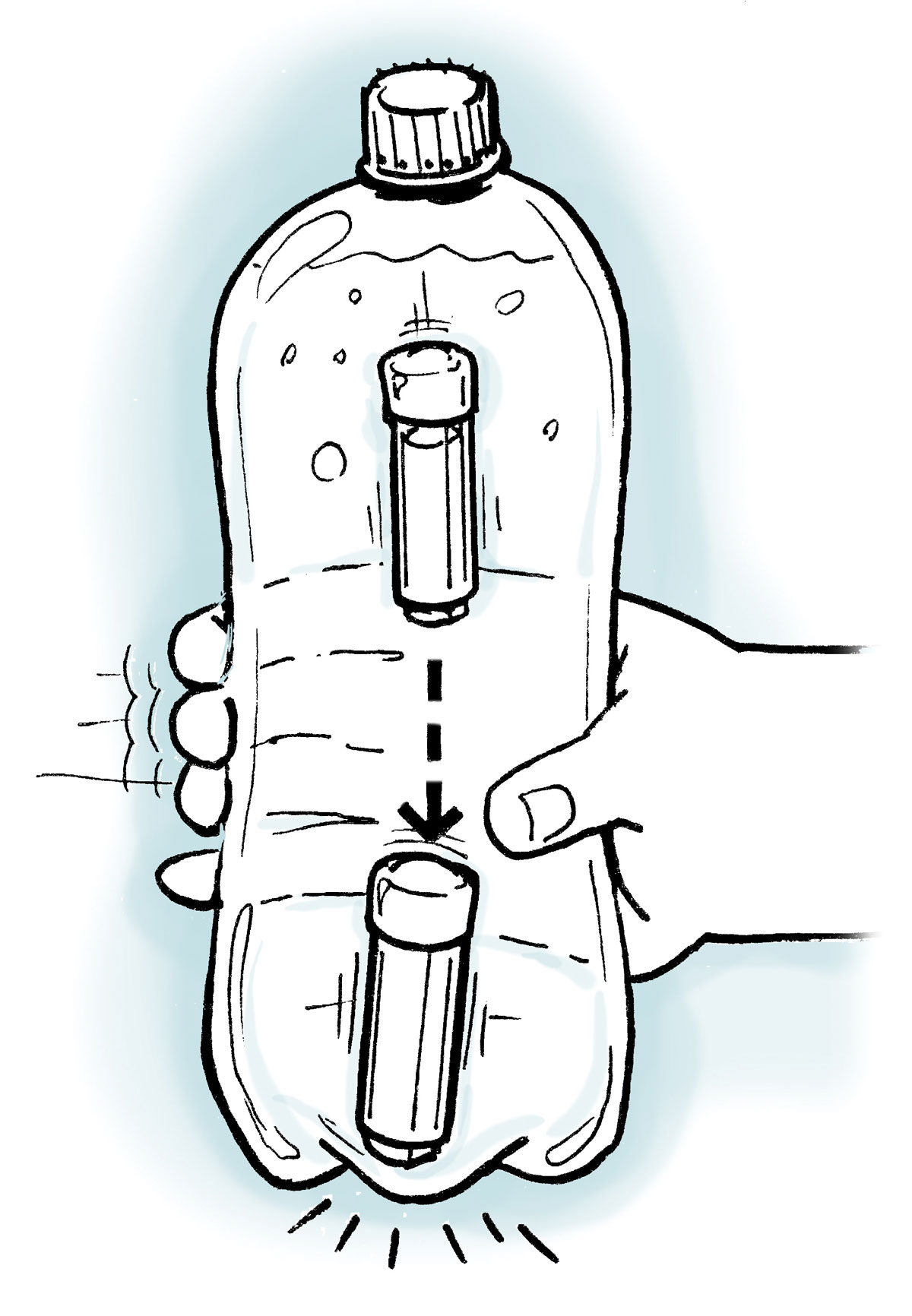
Back when cereal companies had budgets to do such things, I got to invent some fun “free inside” premiums. It’s a real challenge to come up with a toy idea that kids would like, moms would buy, advertising executives would get excited about, safety testers would approve, manufacturers could mold — and all for just a few cents each!
A premium I didn’t invent but admired was “Diving Tony,” a clever version of the Cartesian diver, a classic science toy. Inside a sealed bottle, a tiny Tony the Tiger mysteriously performed tricks, diving up and down. (Read more at makezine.com/go/cereal-science.)
You won’t find a Diving Tony in your cereal bowl today, but you can make your own Cartesian diver toy quickly from just a few parts. I used a short piece of clear PETG tubing with a matching vinyl cap. I also cut a piece of solid styrene rod that fits snugly inside the tube. File or grind a small flat along the length of the rod. This provides a channel for the water to compress the bubble of air inside the cap. Cap the tube and insert the rod.
Test the diver in a sink of water for neutral buoyancy: Slide the rod in or out to adjust the size of the bubble air inside until it just barely floats to the top. Fill a 1-liter plastic bottle with water, insert your diver, and cap tightly. When you squeeze the bottle, the water pressure compresses the air bubble, which then displaces less water, and the diver sinks. When you release, the bubble expands, and the diver rises. With a little practice you can make your Cartesian diver obediently rise or dive on your command.
So why is this toy called a Cartesian diver? As Rene Descartes himself famously said, “I sink, therefore I am!”












